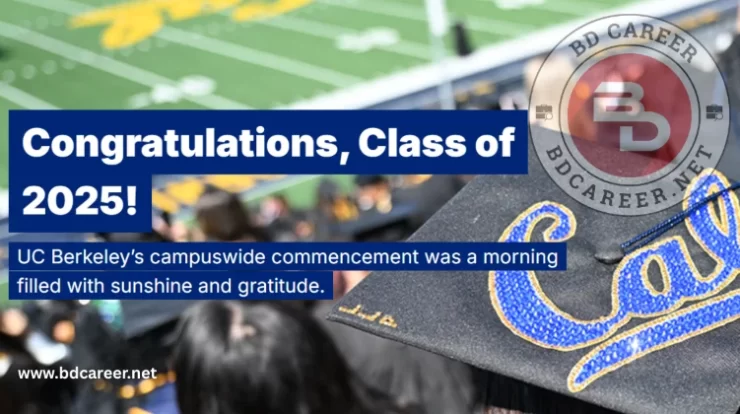
On a quiet UCLA soundstage, a student director shouts “Action!” as a drone camera glides through a scene. Actors perform in front of glowing LED walls that show a digital city, blending real and virtual worlds. Minutes later, the crew gathers in a VR room to review the footage, while a writer adjusts lines on the spot. At UCLA’s School of Theater, Film and Television, this mix of old-school storytelling and new tech is becoming the norm. The school, known for its strong film legacy, is shaping the future of cinema. It brings together heart and innovation. It tells stories in bold, new ways.
Contents
The Digital Revolution Hits Westwood
But storytelling alone isn’t enough in an industry defined by constant reinvention. The past decade has ushered in a suite of digital tools virtual production, real-time rendering, AI-assisted editing, and augmented reality, that have fundamentally transformed the film process. At UCLA, they welcome new technology with excitement, but stay careful. They believe technology should help the story, not take over it.

The UCAL Film School’s recent investments reflect this forward-thinking approach. The Nimoy Theater and adjacent digital labs house equipment that rivals professional studios: motion capture rigs, LED volumes for virtual sets, and facilities for VR and game engine cinematography. Courses such as “Interactive Media and Immersive Storytelling” and “AI in Post-Production” are now integral to the student experience.
“Incorporating tech into our program isn’t just about staying relevant,” says Professor Jeff Burke, a leader in digital media. “It’s about helping students become adaptable, multidisciplinary artists who can thrive in any storytelling format from feature films to VR experiences.”
Innovation and Imagination: A Delicate Balance
UCLA stays clear-eyed about the possible dangers despite all its technological zeal. Students are encouraged to think carefully about how new technology helps or harms the characters, story, and mood.
One such case in point is third-year MFA student Jordan Lin. He created an interactive short film for his thesis project. Viewers can use a mobile interface synced with the movie to change the protagonist’s decisions in real time. Though complicated, Lin’s focus was never on the technology itself. “It starts with the script always,” he says. “Once I had a story that felt personal and grounded, I thought about how interactive media might deepen the audience’s emotional involvement, not just wow them.”
These investigations are guided in great part by faculty members. Mentoring initiatives match students with business leaders who push them to combine intention with creativity. “It’s easy to get excited about what’s possible,” notes historian and costume designer Professor Deborah Nadoolman Landis. The fundamental question is, though, what makes this narrative unforgettable?
A Legacy Built on Story
Established in 1947, UCLA’s film school has helped to mold the visionaries behind some of the most famous American movies. From Francis Ford Coppola to Alexander Payne and Gina Prince-Bythewood, generations of graduates have shown that great filmmaking is fundamentally about narrative. Fundamentally, the school has kept a great respect for narrative tradition, beginning pupils with the basics: screenplay construction, character development, directing principles, and visual grammar.
Professor Barbara Boyle, a former producer and faculty member, once remarked, “Technology can amplify emotion, but only if the story is honest. At UCLA, we teach students that the audience connects with characters, not pixels.” It’s a philosophy still deeply embedded in the curriculum today.

Impact on the Future of Cinema
UCLA’s approach to film education is rooted in classic storytelling but powered by digital innovation. The program is shaping filmmakers who can navigate the rapidly changing world of cinema with skill and creativity. UCLA prepares its students to explore new ways of storytelling and push the boundaries of audience engagement. It does this by encouraging collaboration across disciplines and experimenting with emerging technologies.
More and more, people are using artificial intelligence, virtual reality (VR), augmented reality (AR), and extended reality (XR) to create, share, and enjoy content. These technologies are transforming the entire media landscape, from production to audience engagement.
UCLA’s annual Transforming Hollywood conference highlights how virtual production, generative AI, and data-driven storytelling are reshaping the film industry. These technologies are changing how creators work and how they tell stories. These discoveries suggest a future where movies become interactive and immersive experiences. Instead of just being visual art, they will be shaped by advances in technology.
Real-World Readiness: From Westwood to Hollywood
UCLA has acted proactively to link academics and professional practice as the film business needs increasingly hybrid skill sets. UCLA students collaborate with industry giants like Netflix, Disney, and Epic Games. These partnerships offer seminars, internships, and hands-on projects that mirror real-world production.
These connections have practical benefits. Final-year students often pitch capstone projects to panels that include studio executives and indie producers. The emphasis is on creating compelling, market-ready content that demonstrates both artistic vision and technical fluency.
“The students coming out of UCLA now are expected to wear many hats: director, editor, visual effects coordinator, maybe even coder,” says alumnus and producer Carla Gutierrez. “The school’s new model reflects this reality.”
The Voice of a New Generation
What truly sets UCLA apart, however, is its student body, a diverse, passionate cohort determined to tell stories that reflect today’s complex world. Many students enter the program with backgrounds in journalism, animation, computer science, or theater. This interdisciplinary mix fosters collaboration and experimentation.
Second-year undergraduate Sara Okafor, for example, is directing a short about climate anxiety using motion capture and hand-drawn animation. “I’m Nigerian-American, and I didn’t grow up seeing stories that reflect my experiences,” she says. “UCLA gives me the tools and freedom to build new visual languages.”
Beyond individual projects, student-led collectives such as the Women in Film and Media Association (WIFMA) and the BIPOC Filmmakers Collective help cultivate inclusive spaces for underrepresented voices in the industry.
“The beauty of this moment,” notes Professor Chon Noriega, a film historian and curator, “is that the technology is finally flexible enough to reflect all kinds of stories and storytellers.”

A Blueprint for the Future
UCLA Film School focuses on one guiding idea as the entertainment world changes. Streaming platforms, interactive media, and AI are reshaping how stories are told. Despite these shifts, the school believes the story always comes first. It remains committed to putting storytelling at the heart of filmmaking.
For other film schools facing similar challenges, UCLA’s hybrid curriculum serves as a model. It blends the discipline of classical film education with the energy of new media. This approach helps students become skilled storytellers who can easily use new technology. UCLA doesn’t just teach film; it changes the way films are made.
As Dean Brian Kite says, “Cinema is adapting rather than dying. And our responsibility is to make sure our pupils, not in response to that change, are the ones driving that transition.
The drone camera drops back on stage; the director yells cut and the cast breaks for notes. For decades of filmmakers, this is a peaceful moment they know. Still, behind the scenes, a revolution is underway that combines history with modernism, ink with algorithm, and timeless feeling with tools of tomorrow.
Conclusion
At UCLA Film School, innovation and tradition come together to reshape the craft of filmmaking. Through cutting-edge projects, forward-thinking courses, and teamwork across disciplines, students explore new ways to tell stories. UCLA Film School blends the power of digital technology with the timeless impact of narrative to lead the future of cinema.
This synergy not only prepares students for the future of film but also helps shape it. It ensures that storytelling remains vivid, relevant, and bold in the digital age.
UCLA combines human-centered storytelling with cutting-edge technology. This approach offers a roadmap for film education everywhere as cinema continues to evolve. Here, imagination and invention come together to bring stories to life in ways never seen before. This is where people are creating the new age of movies.





